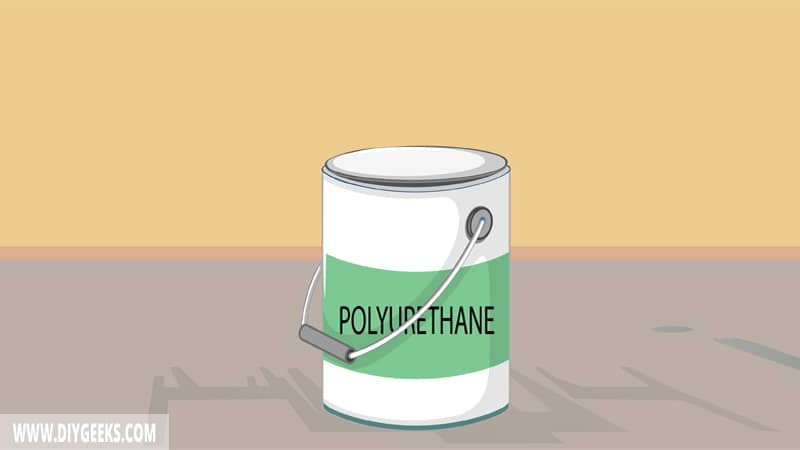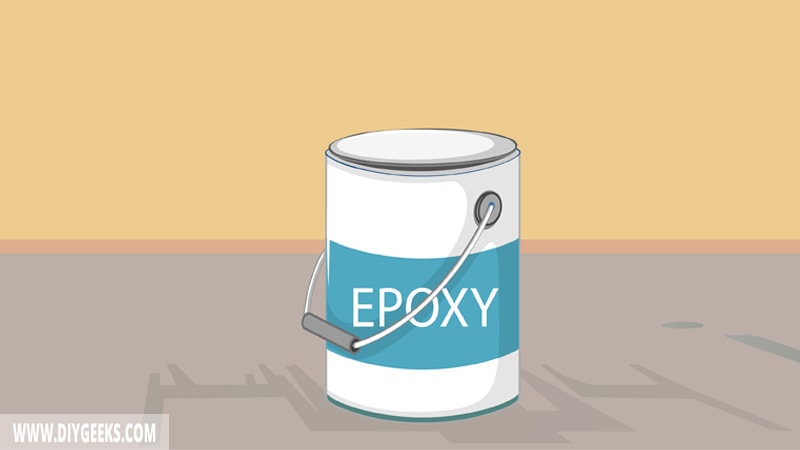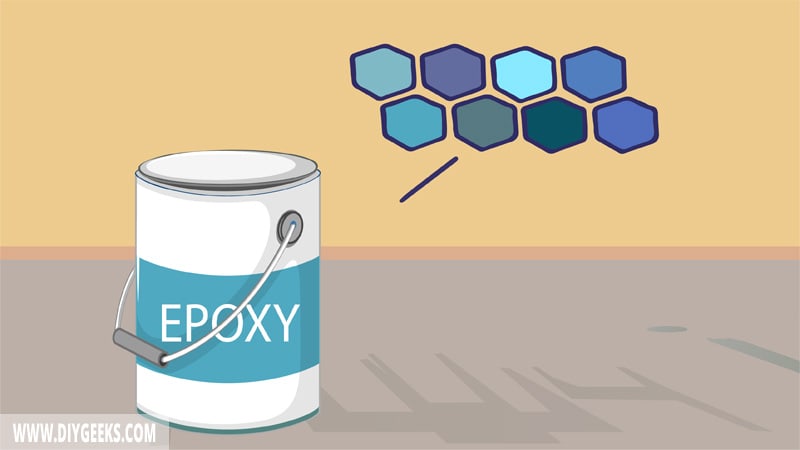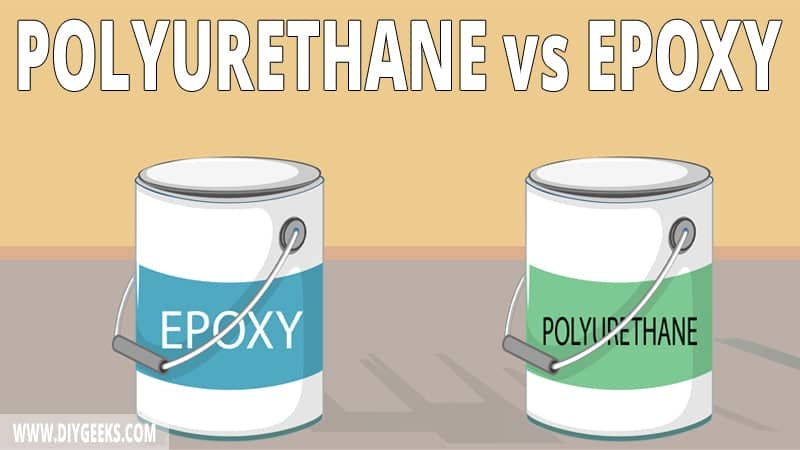Polyurethane is a protective coating (or sealer) that creates a moisture-resistant barrier over surfaces. Epoxy paint creates a hard (or rigid) layer over floor surfaces and protects them from heavy foot traffic or heavy weights.
Polyurethane is more flexible, durable for exterior surfaces, and has more sheen finish types than Epoxy paint. Epoxy paint dries faster, has better adhesion qualities, and has a harder (or rigid) finish than polyurethane.
What is Polyurethane?

Polyurethane is a protective sealer that creates a plastic-like moisture-resistant layer (barrier) and protects surfaces from moisture, water, scratches, and weather elements.
It produces a glossy transparent finish that doesn’t affect or change the surface color shade. There are two polyurethane types; water-based and oil-based. Both types have similar features, but their solvent difference makes them have a different dry time.
What is Epoxy Paint?

Epoxy paint is a paint type that has epoxy resins as its main component. It’s a polymer that combines with a curing agent (or hardener) and creates a hard (rigid) finish over surfaces.
There are two epoxy paint types; one-part epoxy (or 1K Epoxy) and two-part epoxy (or 2K Epoxy). One-part epoxy comes pre-mixed and is ready to use from the container. Two-part epoxy has two components that you must mix; the base and the hardener.
Epoxy paint has good adhesion qualities and dries to form a hard (or rigid) coating that can withstand high foot traffic or heavy weights. It’s mostly used for flooring surfaces.
Polyurethane vs Epoxy Paint
The differences between polyurethane and epoxy paint are listed below.
Formula

Polyurethane is obtained from the reaction between polyols and diisocyanates or isocyanate compounds. Epoxy paint is obtained from the resin and hardener mixture.
The difference in the formula gives both finishes different features. For instance, epoxy is known to be thicker because you have to mix two equal coatings (or parts) to make it.
Flexibility
Polyurethane is more flexible than epoxy paint as it has plasticizers in its formula and forms a plastic-like finish that contracts and expands based on temperature change.
Epoxy paint forms a more rigid or hard finish that does contract and expand, but not as much as polyurethane.
Dry Time
Epoxy paint dries to touch faster than polyurethane, but polyurethane cures (dries fully) faster than epoxy paint.
Water-based polyurethane takes around 6-8 hours to dry to touch and 24 hours to cure, while one-part epoxy paint takes around 4-6 hours to dry to touch and 4 days to cure.
Adhesion Qualities
Epoxy paint has better adhesion qualities than polyurethane because it’s made from two compounds that improve surface adhesion; the resin and hardener. These two products produce a paint finish that adheres to all surface types.
Polyurethane has good adhesive qualities and adheres to most surfaces.
Durability
Polyurethane finish is more durable for exterior surfaces than epoxy paint as it has a more flexible finish and withstands weather elements better.
Epoxy paint is more durable for interior surfaces than polyurethane as it forms a hard and rigid finish that withstands foot traffic longer.
Finish Hardness
Epoxy paint creates a more hard (or rigid) finish than polyurethane and can withstand heavy usage and weights longer. Polyurethane creates a glossy plastic-like finish that is more softer and flexible.
Application
To apply polyurethane, you can use a spray gun, paint roller, paintbrush, or a rag (wiping it on the surface). To apply epoxy paint you can only use a paint roller.
Paint Variety
Polyurethane offers more color shades, types, sheen options, and finishes than epoxy paint. It comes in two types; oil-based and water-based, and offers different sheen finishes; flat, eggshell, satin, semi-gloss, and high-gloss.
Epoxy paint offers limited sheen option choices as the paint is designed to be strong and durable and not for decor or aesthetics purposes.
Interior or Exterior Usage
Polyurethane is better for exterior surfaces as it produces a flexible finish that protects the underlying surfaces from weather elements.
Epoxy paint is better for indoor surfaces (especially floors) as it forms a hard (rigid) finish that can withstand heavy weight and high foot traffic.
Which Finish Do You Need?
Before you make that decision, check the following things.
- Budget: Use polyurethane if you have a low budget.
- Exterior or Interior Use: Use polyurethane for exterior surfaces and epoxy paint for interior floor surfaces.
- Surface Type: Use polyurethane over decorative or painted surfaces, and use epoxy paint for concrete or garage floors.
- High-Traffic Surface: Use epoxy paint for floor surfaces that are exposed to high traffic and heavy weights as it can withstand weight longer. Use polyurethane for patios or walkways with low foot traffic.
Related Read: Can You Put Epoxy Floor Over Paint?
Can You Apply Polyurethane Over Epoxy?
You can apply polyurethane over the epoxy paint finish if you sand the finish with medium-grit sandpaper. The sandpaper creates a rough finish over the epoxy paint and helps polyurethane adhere better.
However, the adhesion between both finishes won’t be good and polyurethane will peel off eventually. It’s better to remove the entire epoxy paint finish, and then apply the polyurethane.


